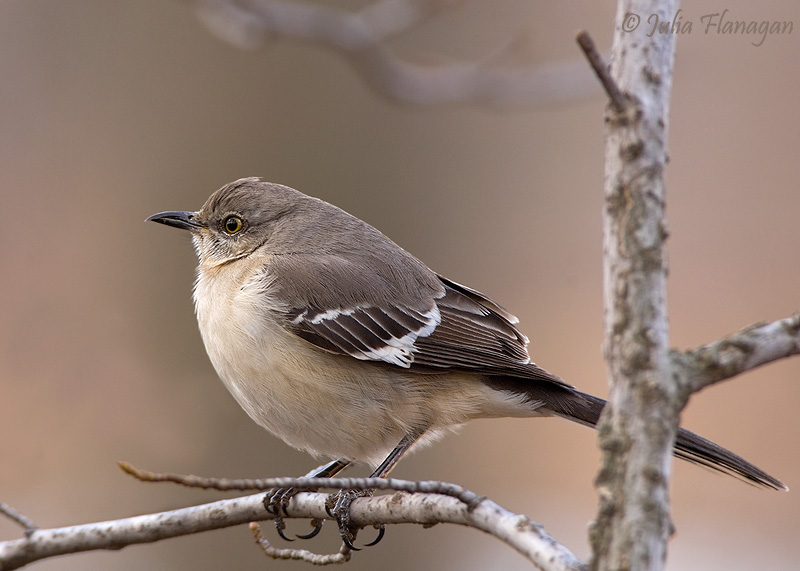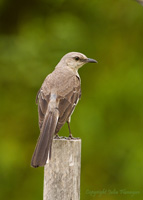
|
Northern Mockingbird Always entertaining, the Northern Mockingbird is readily identified by its song, which mimics a number of other birds' songs, each repeated more than once, one after the other. Both male and female birds sing, but the male is louder and sings more often, sometimes even singing at night. The mockingbird is also easy to recognize – a medium-sized brownish-grey and white bird with a long dark tail with white edges and short dark wings with white bars. The wings also bear white arc-shaped spots that are most obvious as the bird flies away. Juvenile birds are spotted or streaked below rather than uniformly whitish. An inhabitant of suburbs, parks, open areas, and forest edges , the mockingbird perches in the open on trees, fences, wires and roofs, and may also be seen hopping or running in the grass. It eats mostly insects and worms in the breeding season and berries in fall and winter. The nests made by the male bird in trees and bushes are usually relatively close to the ground, less than ten feet up, and are often near houses, which brings them into our field of vision and contact in another way. The birds will defend their nest and territory against predators, such as hawks, and will harass cats, dogs and even humans who come near. Eggs are about an inch long and pale blue or green with many reddish or brown spots. They are year-round residents of suitable habitat from Southern Canada through most of the US to southern Mexico, some Caribbean islands. and the Bahamas. Most common in the south, the mockingbird has been chosen as the state bird by Arkansas, Florida, Mississippi, Tennessee and Texas. |
Home | Upcoming Events | About Us | Resource Issues | News | Local Contacts Maps | Photos | Publications | Youth Education | FAQ's | Links | Membership |






